If you’re looking for a 1910 Liberty Head Nickel or maybe planning to sell one, this price guide can help. Here, we present each valuation from the coin’s lowest grade to proof coins and error coins. The auction record and historical prices are also mentioned per variety to give you a deeper grasp of the nickel you’re collecting or planning to sell.
But before we dissect each piece of information, here’s a 1910 V-nickel price guide digest to get you started.
| 1910 Liberty Head Nickel Value List | |
| Coin Grade | Value |
| Poor-About Good (PrAg) | $1.50 |
| Good (G4) | $3.50 |
| Fine (F12) | $10 |
| Extremely Fine (XF40) | $50 |
| About Uncirculated (AU50) | $65-$70 |
| Uncirculated (MS60) | $110-$115 |
| Gem Uncirculated (MS65) | $500-$900 |
| Superb Gem Uncirculated (MS67) | $9,000 |
| Proof (PF68) | $8,450 |
1910 Liberty Head Nickel History

There are two types of Liberty Head Nickel: one with the word “Five Cents” inscribed and the other without. The latter gave rise to what they call “Racketeer Nickels” and only confused the general public. Telltales passed on as a fraudster gold-plated the nickels and traded them as a $5 gold coin. The coin is rare and quite scandalous, yet legendary.
After the officials were appalled by the flaw, Barber — the chief designer — immediately redesigned the coin. It then gave birth to a new five-cent that continued production from late 1883 until 1913.
Now, in terms of minting, nickel is a stubborn metal. It shortens the life of dies, resulting in breaks and cracks. But as the coin became an integral part of the U.S. currency system, the Mints made adjustments to create better coinage.
However, the quality control is not the best for the 1910 Nickel, reducing the amount of gem condition compared to previous dates. The 1910 Liberty Head coins are softly struck, with eroded fields and mediocre luster. Only a few show sharp strike characteristics.
1910 Liberty Head Nickel Coin Physical Characteristics
- Category: Liberty Nickel (1883-1913)
- Face Value: Five cents
- Obverse-Reverse Designer: Charles E. Barber
- Metal Composition: 75% Copper, 25% Nickel
- Weight: 5.00 grams
- Diameter: 12.20 millimeters
- Edge Type: Plain
Compared to the simple design of the modern nickel, the 1910 Liberty Head nickel offers the exact opposite. Both obverse and reverse designs have intricate details that improve their eye appeal, even in their basal state.

On the obverse side is the large head of Liberty, wearing a coronet and wreath. It is surrounded by 13 stars, with the mint year at the base of the neck.
On the reverse side is a large Roman numeral V encapsulated in a wreath of wheat, cotton, and corn. The words “UNITED STATES OF AMERICA,” “E PLURIBUS UNUM,” and “CENTS” can also be seen on the tail side. And to cap it all off, both sides have a lace-like circular frame that gives the coin an elegant feel.
1910 Liberty Head Nickel Coin Types and Valuation
The 1910 V-Nickel offers a regular strike and proof version, both minted in Philadelphia. Let’s tackle each and see how much they are worth today.
1910-P Nickel Value
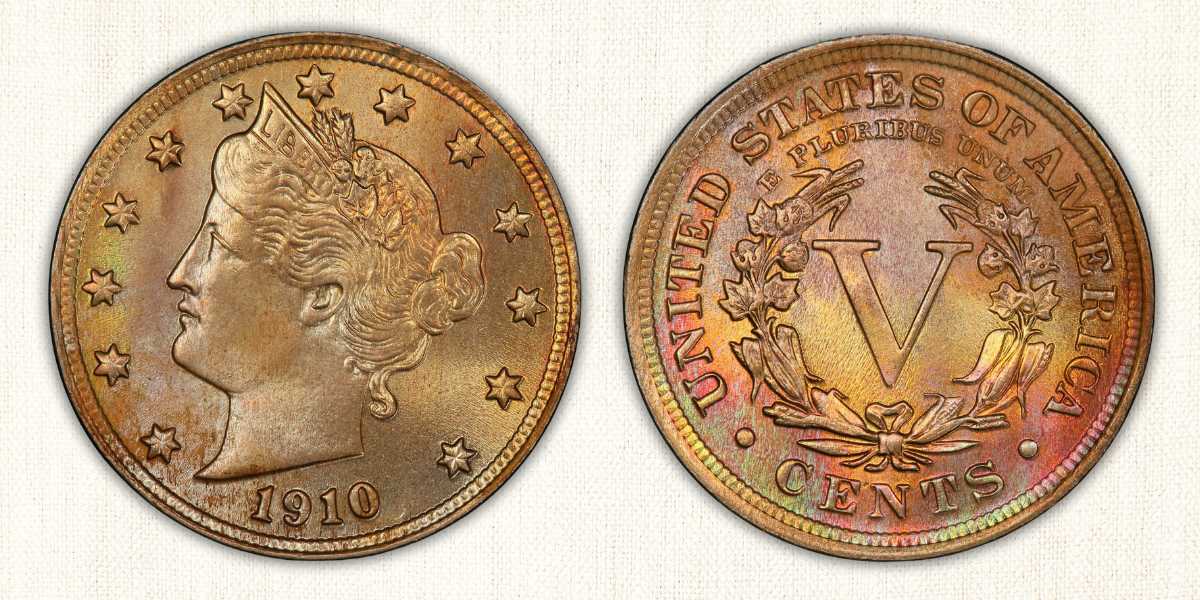
The Philadelphia Mint produced 30,166,948 pieces of 1910 Nickel with no mintmark. It is considered one of the highest mintage among the 33 regular issues of the series, making it a very common date.
The average grades have a survival estimate of a hundred thousand. The mid-range uncirculated grades have around 250 known examples. Superb 1910 nickels, however, only have slightly more than a dozen specimens.
MS66 has 39 examples, while three have a (+) designation. On the other hand, the MS67 only has eight specimens. 1910 is one of the few dates in the 1900s that garnered such high-grade condition. Numismatists view the MS67’s reverse side as one of the best struck amongst the series, but—as mentioned earlier—the coins come with weak elements, especially the stars on the obverse side.
| Grade | Estimated Value |
| MS60 | $110-$115 |
| MS61 | $120-$125 |
| MS62 | $130-$140 |
| MS63 | $175-$190 |
| MS64 | $250-$350 |
| MS65 | $500-$900 |
| MS66 | $1,425-$2,500 |
| MS67 | $9,000 |
According to the latest market price analysis, a 1910 Nickel is worth around $1.50 to $100 for circulated conditions. Meanwhile, an uncirculated condition plays between $110 to $9,000. But let’s look further at its auction history to give you an in-depth idea of its worth over the years.
The highest auction record for this variety is an MS66+ sold for $8,812.50 by Stack’s Bowers in 2012. The coin has a satin, bold, lustrous gem with a lively toning on the rim shining brightly above the Liberty’s head.
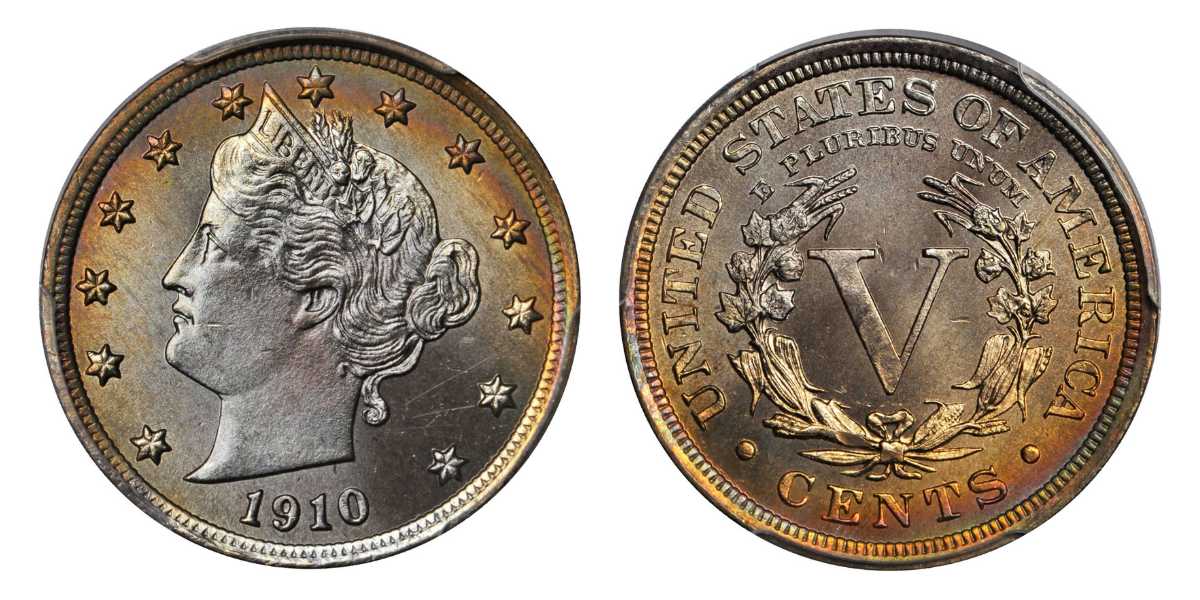
Aside from it, there is another MS66+ that follows close with a final bid price of $8,225 in 2013. For the MS67, the highest sale price is $6,900, sold by Heritage Auction in 2006.
1910 Regular Strike Nickel Historical Prices
The estimated value of the 1910 circulated coin suddenly increased this year. From 2020 to August 2023, the circulated nickel was consistently worth $1.00 to $80, but recently it jumped to $1.50 to $100.
However, it is the opposite for those in Superb Gem Uncirculated condition. From $16,500 in 2016, the 1910 MS67 continually dropped to $9,000 in 2023.
1910 Proof Nickel Value
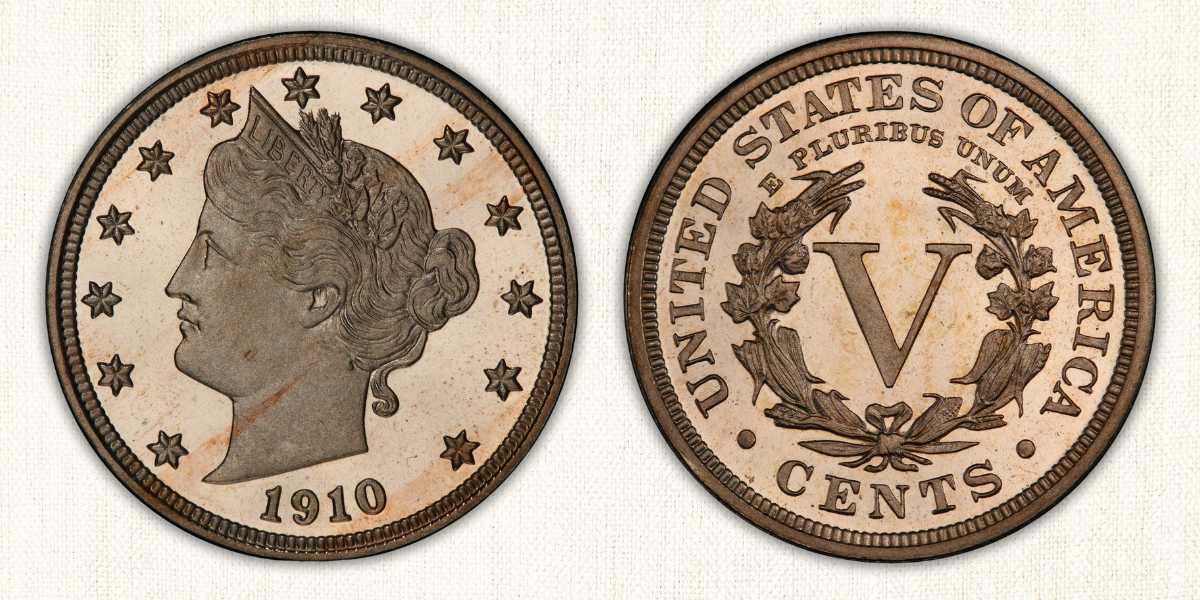
Like regular strikes, the Philadelphia Mint retained a higher-than-usual mintage of proof coins in 1910. It boasts 2,405 pieces of 1910-proof nickel compared to previous years, with only roughly a thousand. But despite the large number, some proof coins get lost or damaged, resulting in a lower survival estimate.
According to PCGS, PF60 to PF64 conditions are very scarce, with 1,925 recorded examples. PF65 and above is considered rare, with only 900 specimens noted. On the other hand, PF68 is the highest grade available for this variety, but only five nickels with such designation exist.
| Grade | PF | PF CA | PF DCAM |
| PF50 | $110 | / | / |
| PF60 | $160 | / | / |
| PF63 | $250-$290 | $315 | / |
| PF64 | $350-$400 | $475-$500 | / |
| PF65 | $550-$700 | $675-$850 | / |
| PF66 | $775-$900 | $1,500-$2,150 | $4,100 |
| PF67 | $1,500 | $2,725-$5,000 | $18,500 |
| PF68 | $8,450 | $16,250 | $30,000 |
As of writing, a 1910-proof nickel is valued between $110 to $8,450, while those with Cameo contrast can reach around $16,250 to $30,000.
Now—let’s see its auction record to know more about its worth.
According to PCGS, the highest auction record for this variety is a PF68 DCAM, sold for an astounding $84,000 in 2018. The coin was described as “perfect for type” among Deep Cameo proofs due to its excellent depth of reflectivity.

With such an immense value, it left a massive gap on the next record, which sold for $45,600 for a PF68 CAM—almost doubled the previous coin.
1910 Proof Nickel Historical Prices
Unlike gem uncirculated regular strike, the 1910-proof nickel continually showed an increase in price for the past five years. A PF68, for example, is valued at $22,500 in the first quarter of 2019. But halfway through the year, it rose to $30,000 and remained unchanged today.
List of 1910 V-Nickel Error Coins
With the combination of dated dies and hard metal, it is inevitable to produce error coins. So, here are some of them and their current valuation.
1. 1910 V-Nickel Strike Through Error—Selling For $35.98
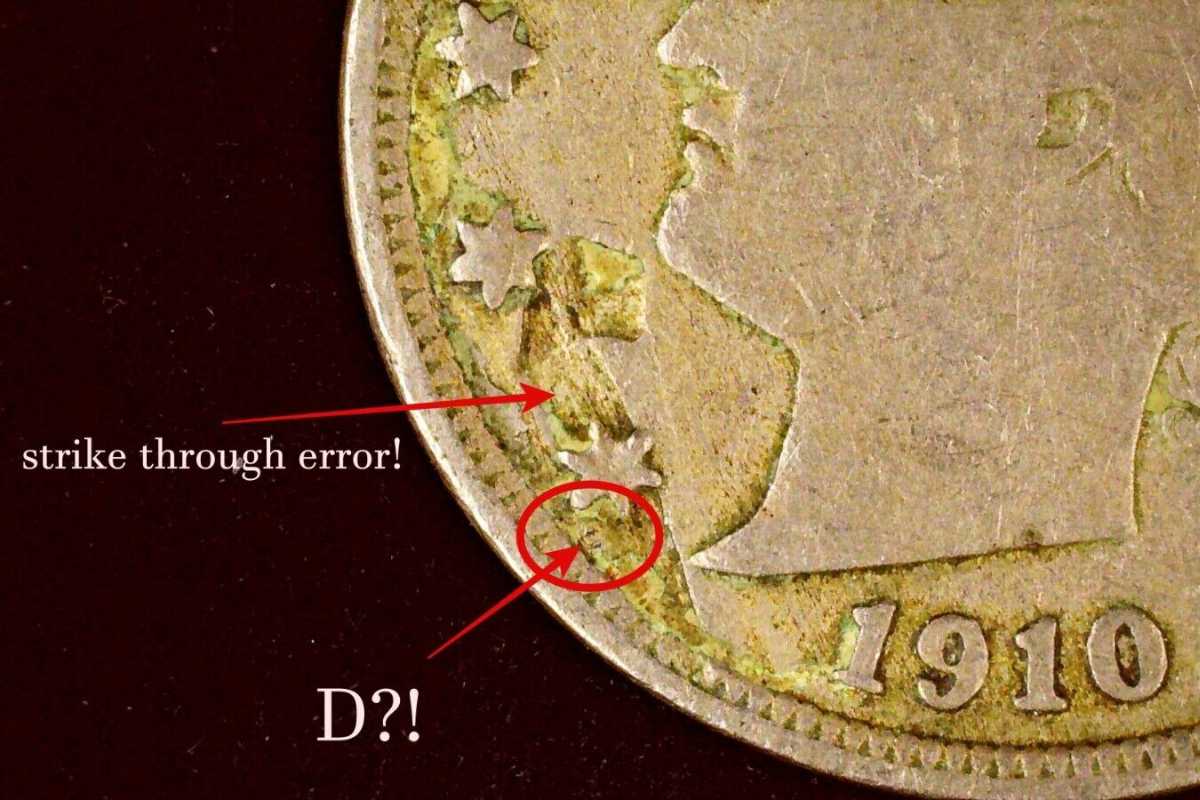
Here is an example of a strike-through error on a 1910 nickel. In the photo, you’ll see a disruption in the design, giving the coin surface an uneven level. It happens when an object gets pressed on the planchet, imprinting its texture on the coin.
It can be a cloth, a piece of metal, or sometimes, grease. This specific coin currently sells for almost $36, but those with dramatic features can sell for higher.
2. 1910 Nickel Lamination Cracks—Selling For $14.99
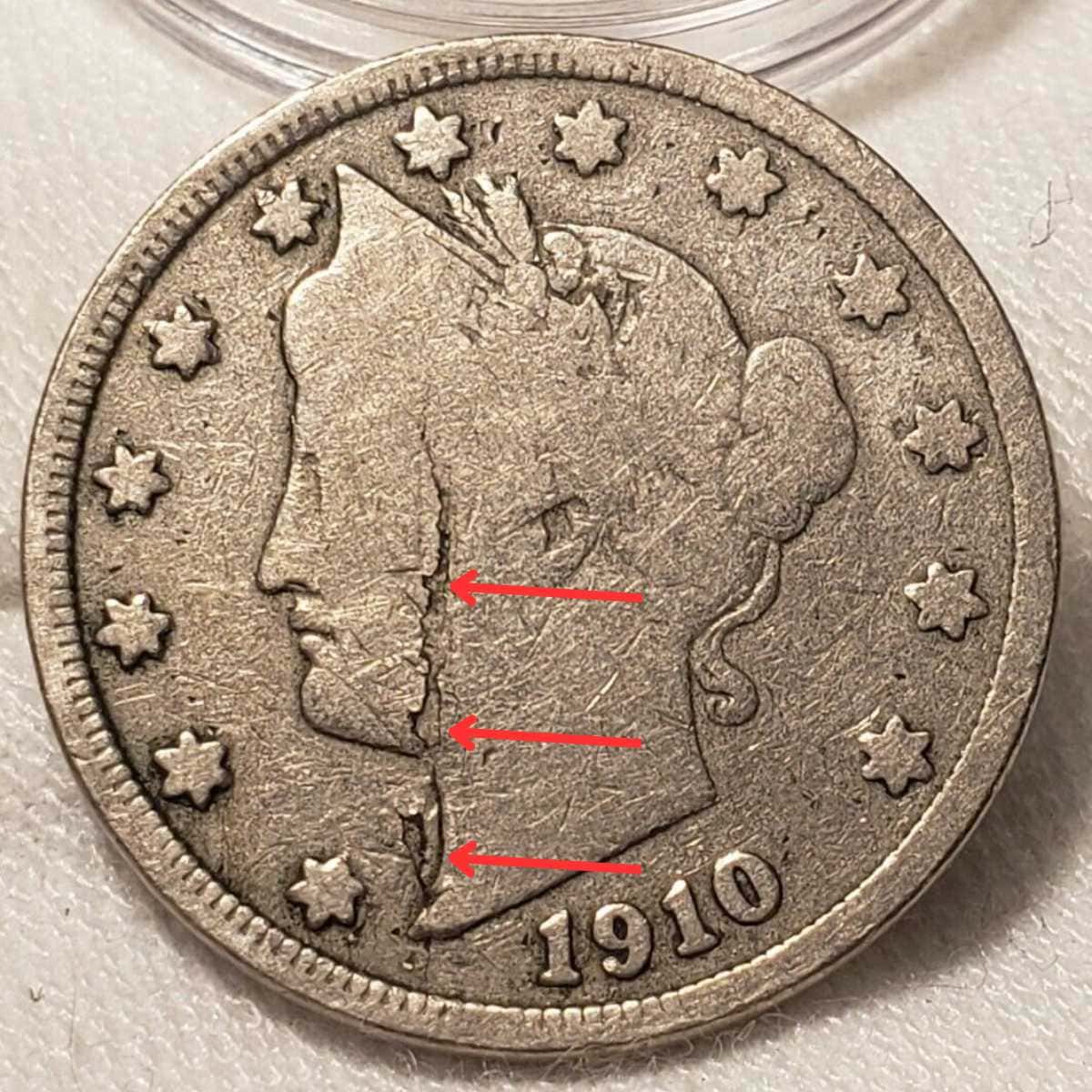
From the name itself, visible cracks can be seen on the coin’s surface with this kind of error. Sometimes, these cracks can lift off on one side before or after a strike. In the photo, you’ll see the ragged partition starting from the rim towards Liberty’s head. Currently, this specific coin sells for $14.99.
3. 1910 Nickel Lamination Error In Cents—Selling for $9.99
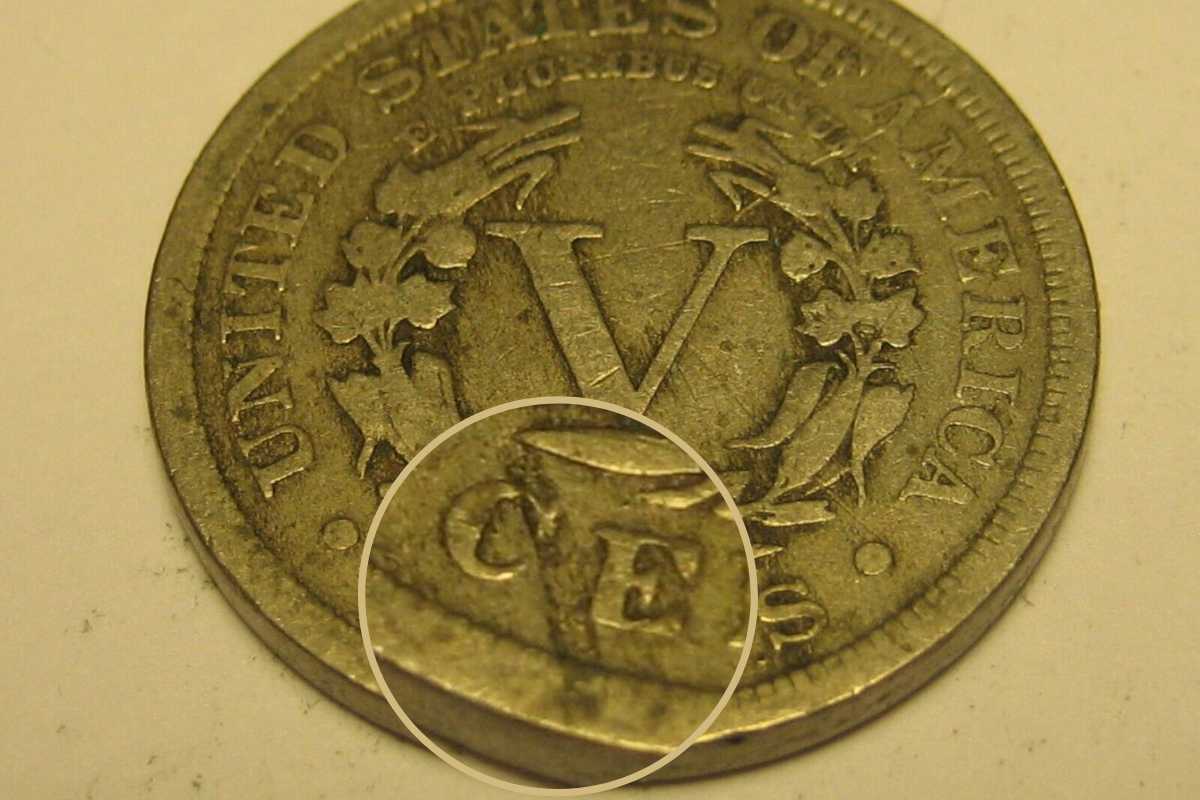
Another type of lamination error is when the metal peels from the planchet. A small piece of the coin can get detached and leave a hollow linear space on the surface. In the photo, you’ll notice a disruption in the word CENTS. A slight lamination error like this does not add much value to the coin, but those with higher grades can fetch more.
4. 1910 Nickel With Multiple Die Cracks—Selling For $8.85
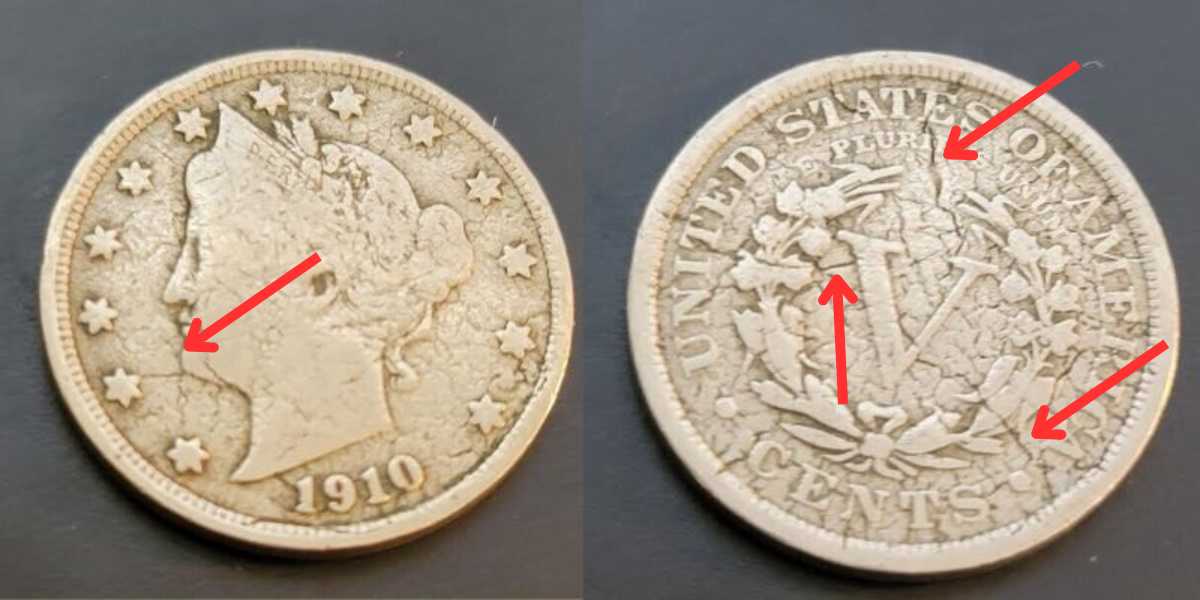
We’ve repeatedly mentioned how hard a nickel is and how it can easily break an old die. The result of the two combinations is exactly like this nickel with multiple die cracks.
This error happens when a die develops small gaps due to repeated pressure after multiple minting. When it gets punched on the metal, it imparts a cracked surface. Currently, this coin sells for $8.85, while those with less obvious cracks sell lower.
5. 1910 V-Nickel Missing Clad Layer On Reverse—Selling For $29.00

There are situations wherein the nickel layer does not bond perfectly with the copper layer. As a result, the outer part gets missing, exposing one or both sides of the coin.
On the obverse side, you’ll notice a silvery-white nickel layer, while on the reverse side is a faint red-orange copper. This specific coin sells for $29.00 but can sell higher if the missing layer is on the obverse side.
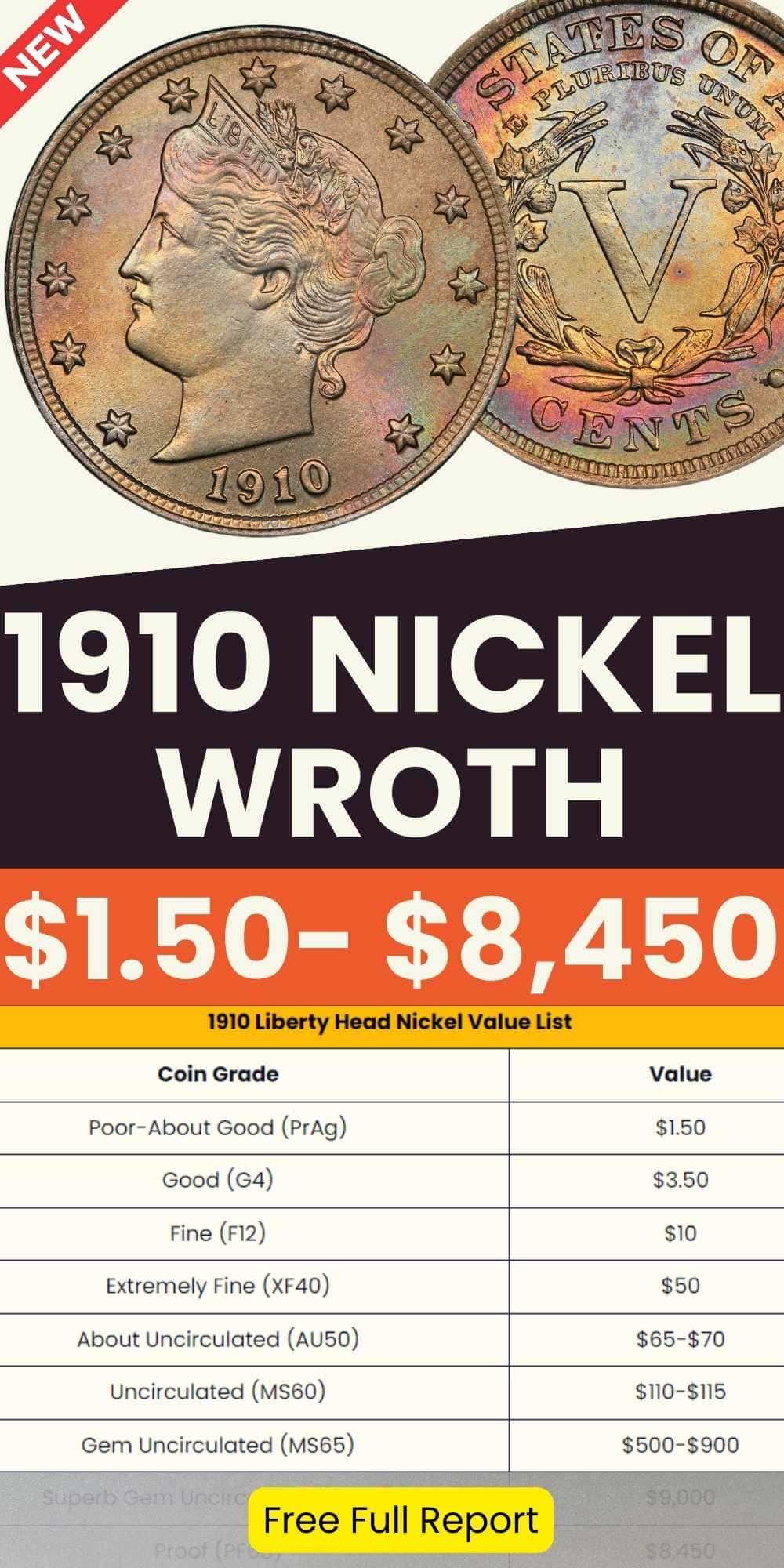

Jenson is a professional numismatist, a dedicated coin collector, a graduate of the College of Business at Oregon State, a life member of the American Numismatic Association (ANA), and an overall coin nerd. He is the founder of Coin Value List.
